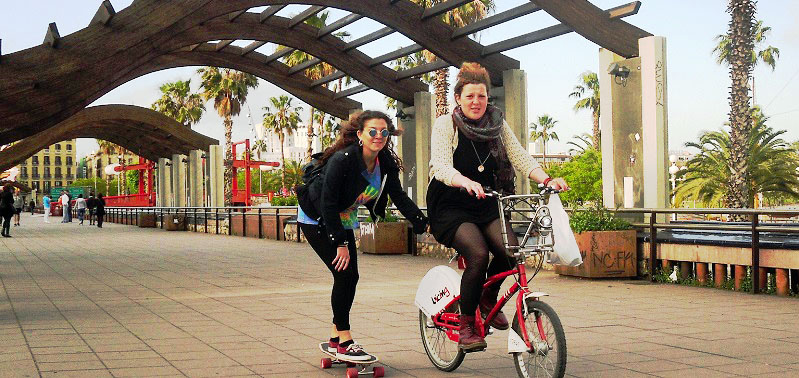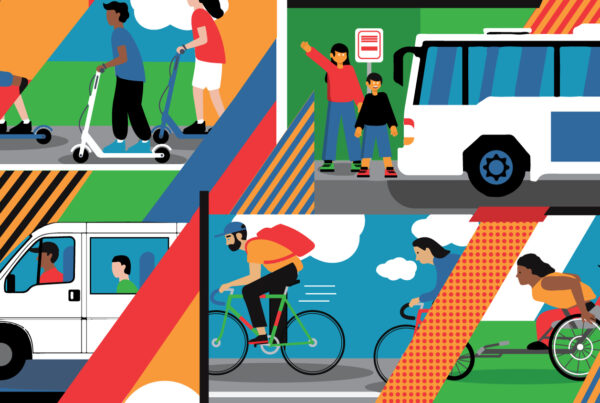The growth of bikesharing in recent years has been well documented. For all its momentum, however, the industry has obstacles that have yet to be overcome, including financing issues, equity challenges and a general lack of protected bike lanes and infrastructure that make people feel safe enough to share the road with cars and trucks.
Another interrelated issue is one of perception – at the end of the day, a majority of Americans just don’t see cycling as a primary means of transportation.
According to a recent survey conducted by the Breakaway Research Group for People for Bikes, only 29 percent of U.S. adults over 18 rode a bike at least once in the last year. Of those, less than half rode more than twice a month, and just 14 percent biked at least twice a week.
However, those numbers might be about to get a boost thanks to a new mode of transportation poised to sweep into cities across the nation – electric bikesharing.
This September, Birmingham, Alabama will debut its Zyp bikesharing system featuring 400 bikes, of which 100 will have electric pedal-assist technology. Other cities such as San Francisco and Seattle are also pursing e-bikesharing systems of their own, while cities in Denmark in Spain have been operating e-bikesharing for the last several years.
These systems all feature “pedelec” bikes that use small electric motors to provide pedal assistance for riders. The motor can help counterbalance obstacles like hills and wind, or just give an extra boost to those of us who don’t have the stamina of a professional cyclist.
Experts have predicted that the U.S. will become one of the world’s top markets for electric bicycles in the coming years, which could have major implications for bikesharing, including helping systems reach new riders and expand in cities where geography makes riding a bike downright difficult.
Changing Perceptions
While residents in European cities like Amsterdam have long use bikes as a primary mode of transportation, in the U.S. biking is still viewed by many as a form of exercise. E-bikes may be able to help change that by appealing to those who are more interested in getting from point A to B than getting a workout. The barrier to entry for e-bikes is also relatively low.
“As far as the user experience, there is very little difference between an e-bike and a regular bike,” said Randy Neufeld, director of the SRAM Cycling Fund. “You don’t need to learn to use it. The harder you pedal, the more assistance it gives you. For the most part you don’t even know you’re on an e-bike.”
According to Neufeld, there is also a certain “whizz bang” factor that may help e-bikesharing appeal to new audiences. “People like things that are new and on the cutting edge,” he said. “E-bike technology is rapidly evolving, and people are excited by that.”
For instance, there may be opportunities to link smartphones and e-bikes, or to include GPS navigation and other interactive features directly in the bikes themselves. In Copenhagen’s system, each electric bikeshare bike has an iPad-like tablet installed in its handlebars that can be used to display maps or travel tips.
E-bikesharing might also help reach people who are out of shape, have limited mobility, or are otherwise hesitant to hop on a bike. By giving riders some extra assistance and allowing them to gradually build up their stamina, heart-rate and resistance, e-bikes can help nudge these riders toward biking – and bikesharing.
“We wanted to reduce the barriers to access for elderly people, people who are obese, people who had knee surgery or something. Anyone who still needs a little assistance, but wants access to bikes,” said Lindsey West, director of REV BikeShare, the nonprofit in charge of Birmingham’s Zyp program, in a recent interview with AL.com.
The potential for e-bikesharing might be especially relevant as members of the Baby Boom generation – some 76 million Americans – approach their golden years.
While reaching new cohorts is important, Neufeld suggests the biggest benefit of e-bikes will be to expand bikesharing in cities where riding is challenging.
Hills, Heat & Sprawl
One of the biggest barriers to bikeshare’s expansion has been the fact that some cities are just not built for biking. They have hills, wind, weather and other obstacles that can make hopping on a bike unappealing.
“I think there are certain places in U.S. where e-bikes just make lot of sense due to factors such as hills, heat or even bad land use,” said Neufeld. “Cities like Memphis and Phoenix are really sprawled out and don’t lend themselves well to bicycling.”
In some especially hilly cities, bikeshare bikes tend to accumulate in low-lying areas and need to be redistributed by trucks at night to move them to higher ground. E-bikes could easily remedy that issue.
Seattle (a city that some have suggested may be too hilly for bikeshare), recently applied for a $10 million federal TIGER grant to expand its bikesharing system and add e-bikes to its fleet.
However, it’s not likely every bikeshare fleet in the near future will – or needs to – go electric. In relatively flat cities like Chicago and New York City, it might not ever make sense to move away from traditional bikesharing bikes, says Neufeld.
Cities can also do more to address obstacles to cycling that, unlike the weather, are within their control. Active transportation advocates and local governments need to work together to better prioritize the creation of bike infrastructure that makes it safer, easier and more pleasant to ride – improvements that are meaningful to traditional and electric bikesharing systems alike.
“If a city has good cycling infrastructure, it is going to have good e-bike infrastructure,” said Neufeld.
New Neighborhoods & Uses
Another benefit of e-bikes is that they can also help people travel farther, potentially extending the reach of bikesharing systems to new neighborhoods and to a much wider geographic audience. In this way, e-bikes can turn bikeshare into more regional systems, instead of systems limited largely to downtown areas.
Since people can travel greater distances, bikesharing can be also used for different kinds of trips, as opposed to just short rides within a city’s core. In fact some have suggested that, by allowing riders to go farther, the e-bike can be a “car-killer” that makes cycling more competitive with private auto trips or transit.
The Path to E-Bikes
By enabling longer trips, e-bikes might also change the way bikesharing works, necessitating new business models and pricing structures. But the challenges don’t end there. According to Neufeld, other issues to consider include cost and changes to station technology.
“The number one challenge is cost,” said Neufeld. “E-bikes are more expensive, and maintenance will also cost more, particularly as it relates to the bikes’ batteries, which will wear out over time.”
Copenhagen, with its sophisticated e-bikesharing system, has been criticized on cost and has encountered some financial problems.
Another major factor to consider is station technology and power. Most bikesharing systems currently use free-standing, solar-powered stations, which Neufeld calls one of the biggest innovations in bikesharing to date.
“They are mobile nature and easy to manage,” he said. “You don’t need every station to be a construction project. E-bikes, on the other hand, need to charge when in the station, which means they have to connect to a city’s power grid somehow. You have to dig a trench and run an electric line, which means you need to get permits and coordinate with other agencies. It can be a big deal.”
The more extensive needs of e-bikes also mean it might not make sense to have mixed manual/electric bikesharing systems, says Neufeld, despite the fact that some early adopters such as Birmingham and Barcelona are exploring that model.
Overall, however, the challenges dim in comparison to the promise that e-bikes hold. There’s no doubt ebikesharing is coming soon to cities across the nation, which will only expand the important role bikesharing systems already play in offering first and last mile connections to transit and providing excess capacity during peak travel times.
By expanding the number of mobility options available to residents – and ensuring sufficient infrastructure is in place to support these new modes – cities can help further increase access to transportation and make it more possible than ever before to live well without owning a car.
We look forward to tracking the progress of e-bikesharing as cities such as Birmingham and San Francisco launch their systems later this year, and will be exploring the trend of e-bikes and electric carsharing cars in a special session at SUMC’s national shared mobility summit Move Together on September 28-30 in Chicago. We hope to see you there!



